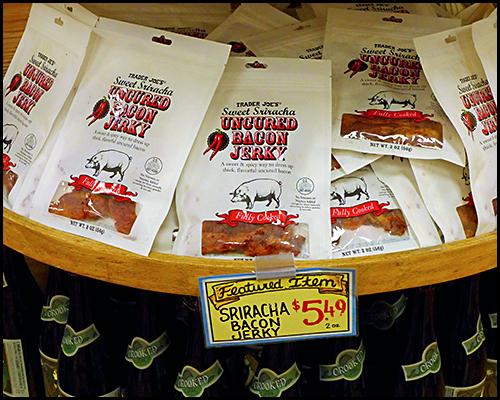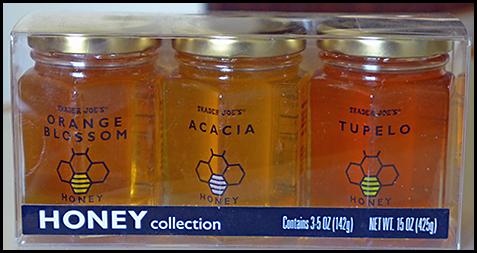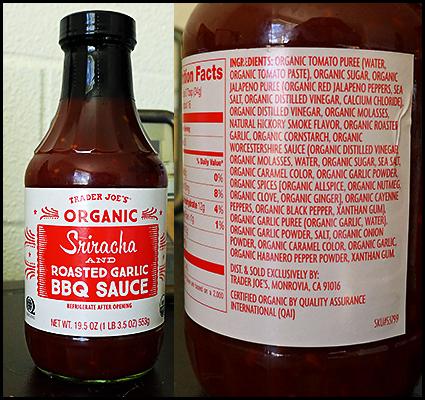-
Posts
4,805 -
Joined
Content Type
Profiles
Forums
Store
Help Articles
Everything posted by Shel_B
-
Sure, but since I've never used this stuff, and never made a pie dough, I don't know what more there is to know about handling, care, etc. Is there a best way to unroll the dough? A best temperature or consistency? Best way to trim it? Maybe some people have some tricks or tips to get specific results. What's written on the box isn't always everything one needs to know to get good results.
-
For our Valentine dinner, I'm planning to make a Chorizo, Red Pepper, and Potato Galette using a frozen pie dough However, I've never used this ingredient. I'd appreciate any suggestions on how to best use it. Thanks!
-
I lean somewhat in Lisa's direction. Last year I provided very specific details and instructions to my "son-in-law" for making a dish that would be served at a small, intimate dinner for four. I provided specifics such as exact oven temperature, which rack in the oven the dish should be cooked, precise measurements of ingredients, and so on. When SIL cooked the dish he decided that the proportion of ingredients was wrong (never having made the dish himself, or used the technique), and that my recommended oven temp "couldn't be right." Came time for dinner, the dish was ruined ... and this guy has owned restaurants and been cooking for 35+ years. I'd urge caution, but not necessarily forgetting the idea.
-
You should try it for yourself even if everyone agreed with me ...
-
There's a brownie recipe that I've been using for about a year now, and I would like to try something new. I have some dark rum in which a few vanilla beans have been soaking. I'd like to incorporate that rum into the brownies. How would the addition of the rum effect the proportion of milk that is used in the original recipe? Should I reduce the amount of milk by the amount of rum added, or just replace the milk (1/4 - 1/3 cup) entirely with the rum? Or should I just add the rum to the regular recipe (giving me more total liquid) since, at least in some types of cooking, the alcohol evaporates? My ex-wife used to make a well-received brownie recipe using Kahlua, in which the Kahlua was added to the mixture and then, when the brownies were done baking, she'd brush some Kahlua on the top. Looking at her recipe, she used no milk, just Kahlua. So, any suggestions for adding the rum to my brownies? Thanks!
-
Trader Joe's Uncured Sweet Sriracha Bacon Jerky Judy, my personal shopper, put me on to this new item today, and she swears it is deeeelish! I've not tried it yet, but you can.
-
Perfect timing! I was just putting together a spice order ... Super!
-
A lot of people around here want convenience. Also, many people are not "cooks," and lack the skills or the equipment to cut up a chicken, or even do other basic cooking tasks.
-
We have a few good poultry stores in the area, and, as you say, they'll cut up a chicken at no additional charge. However, their chickens cost more than supermarket birds to begin with, and they offer a wider variety and quality range of chicken than you'll ever find in a supermarket. When I'm serious about the chicken I use, I'll gladly pay the $$$ and get exactly what I want. Unfortunately, such is not always possible in other areas ... although, I've been into at least one supermarket here that will cut up a bird for their customers, also at no additional charge.
-
Recently I came across Trader Joe's Honey Sampler on the shelf at the local TJ's. The sampler contains some of my favorite honeys .... Tupelo, Acacia, and Orange Blossom.
-
I contacted a couple of sellers of high quality vanilla beans, and thus far received a response from one of them. "Bring the custard mixture up to 160-170 degrees. Remove from heat, place in vanilla bean and scrapings. Let cool to room temperature, remove vanilla bean. Leave in vanilla caviar. Finish recipe. " As suggested by Elsie, I was concerned that too high a temperature might not be a good idea, perhaps damaging or destroying some of the flavor and aromatic compounds.
-
FWIW, in the past, I've made panna cotta for pot lucks and other situations where I did not use a mold. I made the dessert in a large container and let people scoop out just what they wanted. While the technique may not be ideal for every situation, it is an option for some.
-
Ohh, that sounds nice. Please let us know if you find it. I'd like to find a source for a satisfactory guanciale
-
I like panna cottas for easy desserts that are well received.
-
Toots and I will most likely have dinner at my place. I'll fill the space with flowers, make her a nice card (actually, it's already done, just has to be printed), and prepare something that I know she likes and that will be a little special for her. I already know what the dessert will be - a toasted almond panna cotta. Neither of us are big drinkers, but there is a nice bottle of French Champagne here that I may break open - we'll see. After dinner we'll probably watch a movie - perhaps a romantic comedy ... can't do that in a restaurant!
-
TJ's Organic Sriracha & Roasted Garlic BBQ Sauce: I saw this for the first time this morning and decided to give it a try. I often add garlic, hot pepper flakes or sauce, and other ingredients to prepared BBQ sauce, so this seemed like a reasonable purchase. When I taste it, I'll post my comments. If someone has already tried it, let's hear from you ....






